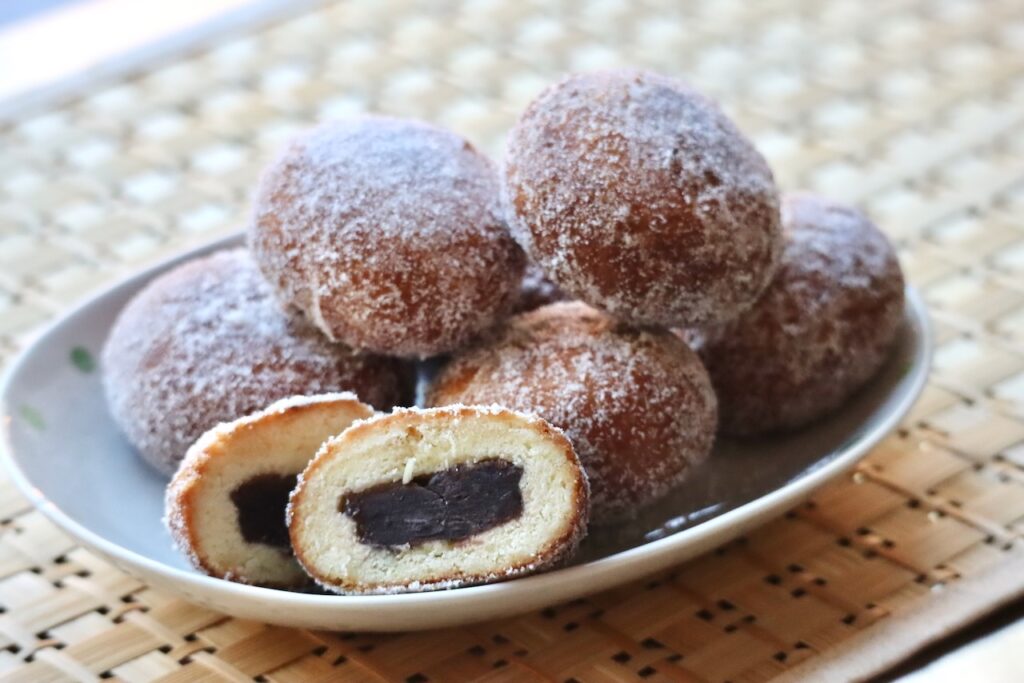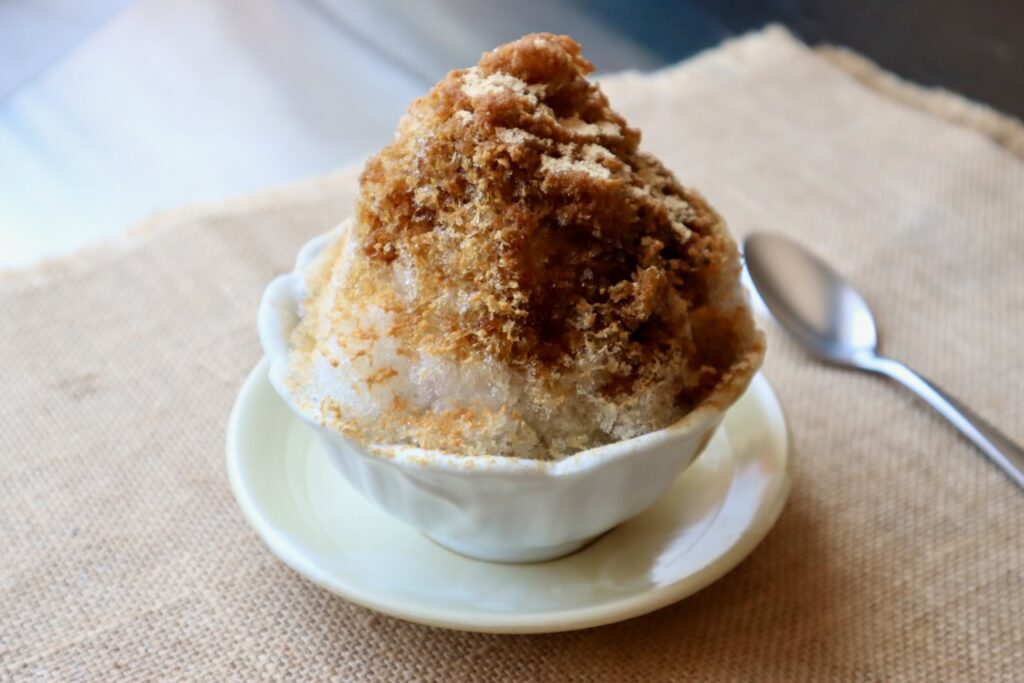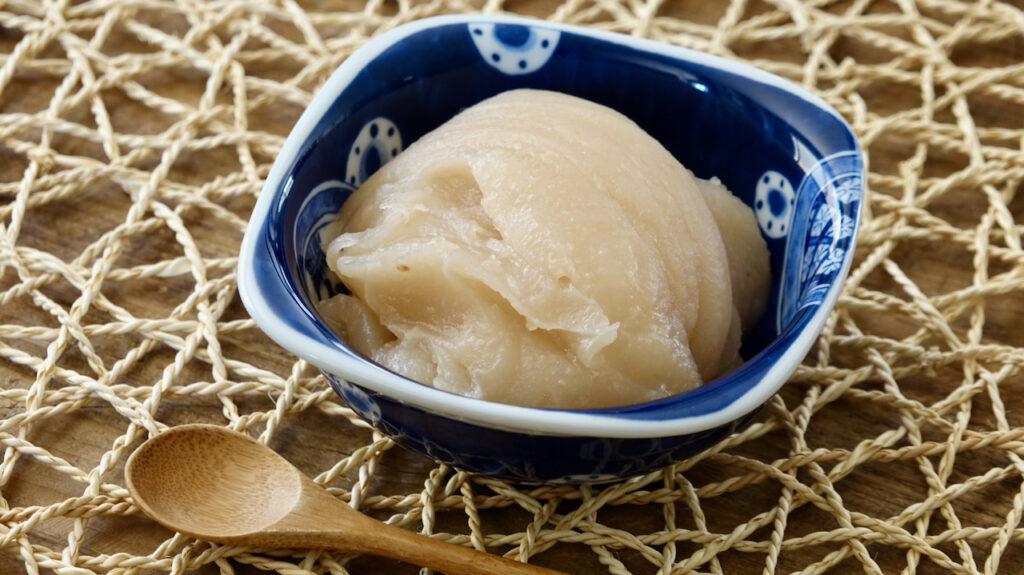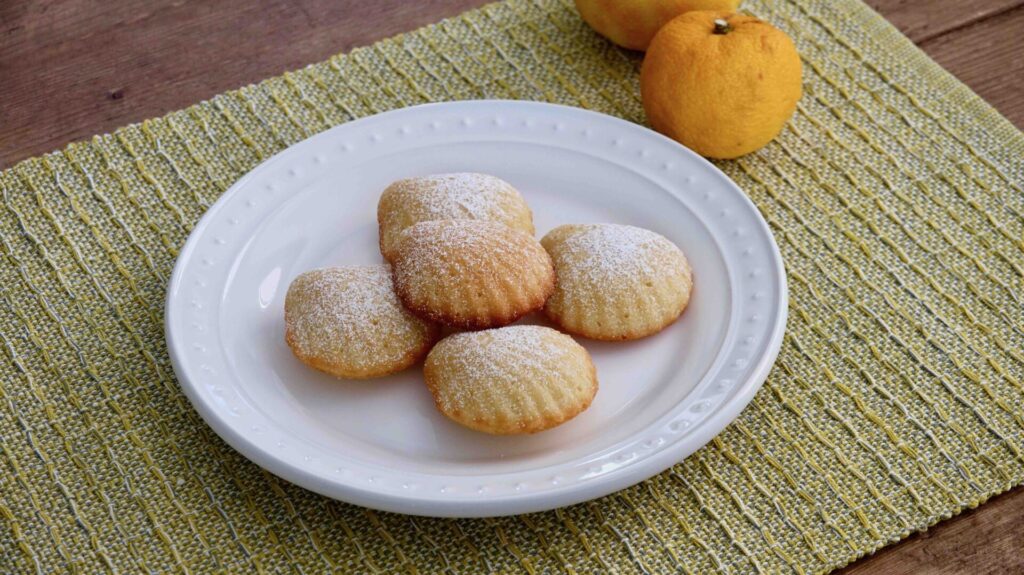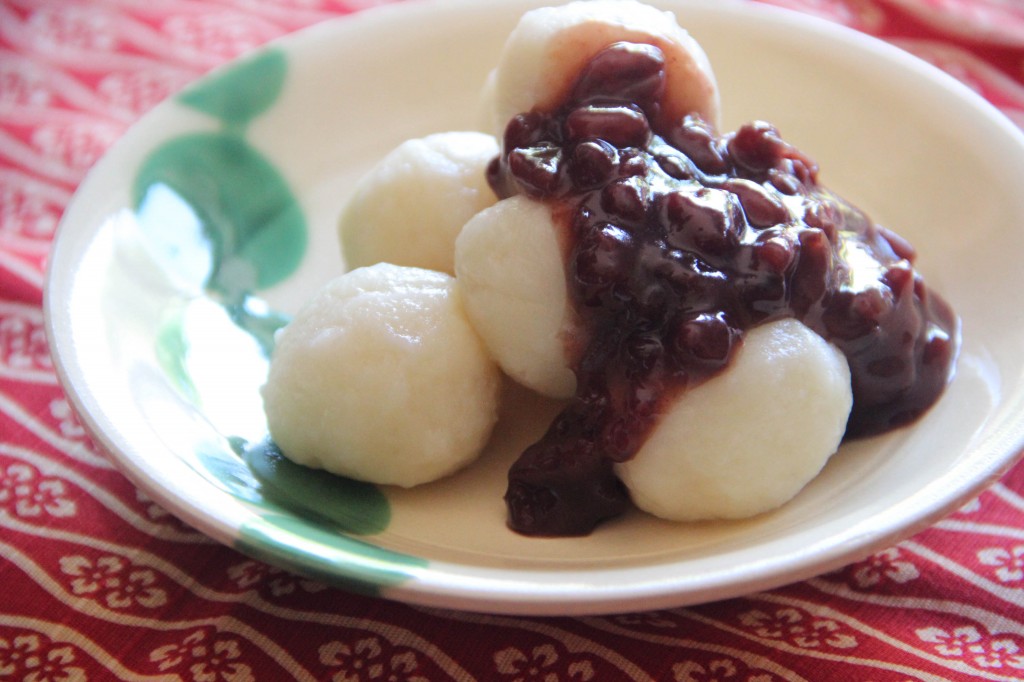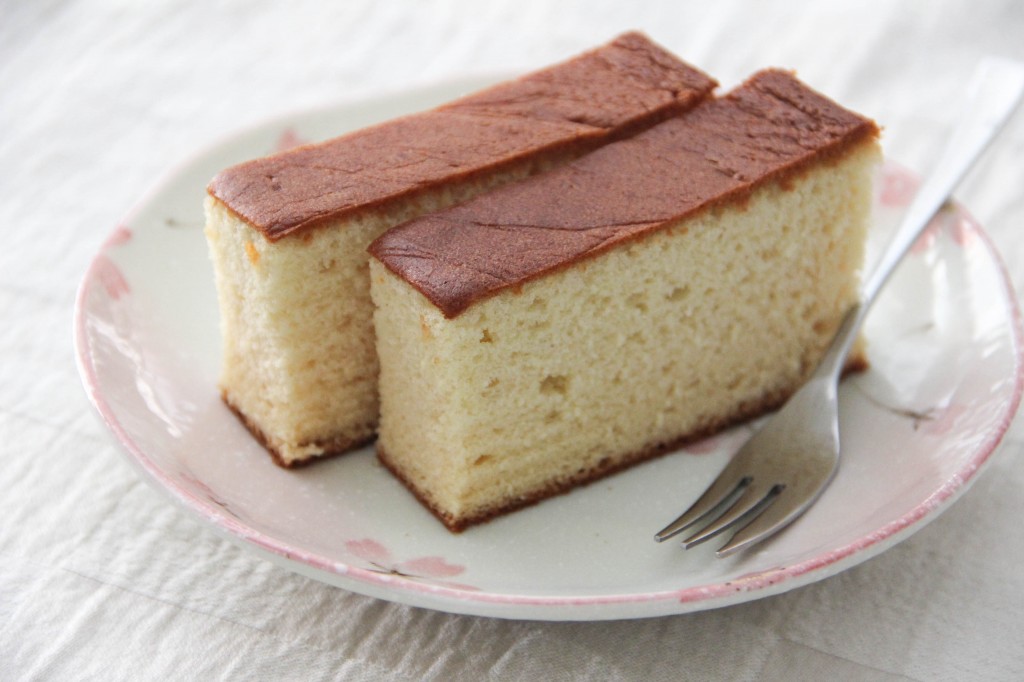An-doughnut, or Sweet Red Bean Doughnut, is a type of Japanese-style doughnut. It is a deep-fried confectionery and a variant of traditional doughnuts with a Japanese twist, containing Anko sweet red bean paste as a filling. Variations of this old-fashioned doughnut have been cherished in Japanese food culture for centuries, and it remains one of the favorite items in bakeries there.
Kakigori (かき氷) is Japanese shaved ice, usually with flavored syrup on top like strawberry and Matcha syrups. It is very popular during the hot and humid summer in Japan, and there are a lot of pop-up Kakigori stores appearing in the season. And that’s been a favorite way for everyone to cool off during those unbearable days and months for many years there.
Shiro An is sweet white bean paste, and it is a crucial ingredient for Japanese traditional confectioneries, just like Anko sweet red bean paste. Shiro An is made from white kidney beans and sugar. It’s used in a lot of different forms of desserts in Japan, from fresh Mochi desserts such as Fruit Daifuku to baked Manju so it is a great recipe to know if you like making Japanese sweets.
Madeleines are French sweets that are a cross between cookies and cakes. They are usually baked in shell-shaped molds or a special Madeleine pan with shell indentations. We flavored this traditional French concoction with fragrant Yuzu citrus peel. The distinctive Yuzu citrus aroma is unusual but a surprisingly good match with the buttery rich cake.
Dango is a general name for small ball-shaped mochi dumplings. Usually the mochi itself is not sweetened, but toppings and sauces are. Dango are often skewered on bamboo sticks so they are easier (and more fun!) to eat. Dango are a more casual and everyday kind of traditional Japanese sweet (how elegant could it be being on skewers?) than some other formal desserts used in tea ceremony and such.
Kasutera (Castella) is an old-fashioned Japanese sponge cake that is loved by everyone from the young to the old. It is sweeter and moister than western sponge cakes which are often designed to be eaten with cream or some kind of frosting. You can eat Kasutera as is, and it is perfect for tea time with green tea.
